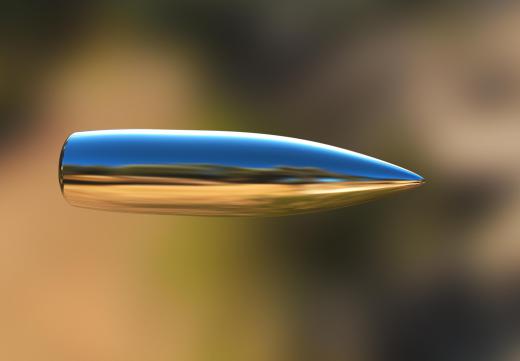What is Lead?
 Mary McMahon
Mary McMahon
Lead is a metallic chemical element which is classified among the poor metals of the periodic table of elements. It has a wide range of historical and current applications, and many consumers own products which contain it. This element does not typically appear in a pure form in nature; it is extracted from galena, a mineral with a high lead content, through a smelting process. Lead is sometimes also associated in nature with silver and gold, two other highly useful metals.
Humans have been using lead for thousands of years. Because this metal is extremely soft, it is very easy to work, and early metalsmiths could manipulate it with minimal heat. Numerous cultural artifacts contain lead, often in the form of metal alloys, and the ancients were obviously very familiar with the metal, though unfortunately not with its negative health effects. One of its most infamous historical uses was in Roman plumbing and pewter, an alloy which was used to make many household goods including cups and plates.

When lead is freshly isolated, it is a bright, silvery metal. However, exposure to air quickly causes it to tarnish, acquiring a dull gray color which is familiar to many people. The element is soft enough to be cut with shears or a knife, and it has a very low melting point. It also happens to be resistant to many corrosives. Lead has the atomic number 82, and it is identified on the periodic table of elements with the symbol Pb. If you're wondering what the letters “P” and “B” have to do with L-E-A-D, the “Pb” refers to the Latin name, plumbum; the English name appears to be Celtic in origin.

The uses for lead are myriad. The resistance to corrosion and malleability make it a popular additive to alloys, and it is also used in bullets, soldering material, radiation shields, and some paints. Lead has also historically been used as an additive in glass, which is why some antique and modern glass is not safe to eat or drink from. It was also the material of choice for movable type from the 1400s, when Gutenberg invented the movable type press, to today; several foundries still cast lead type and other equipment for use with letterpresses.

Many people are aware that this element is toxic. Lead is a neurotoxin, so it will attack the brain and spinal cord. Because it bioaccumulates in the body, someone may suffer from lead poisoning slowly without being aware of what is going on. When someone presents with neurological problems to a doctor or hospital, poisoning from this metal is sometimes on the list of suspects.
AS FEATURED ON:
AS FEATURED ON:













Discussion Comments
Some scientists now believe that the Roman Empire fell in part because their plumbing, food storage, and many other systems relied in part on lead paint.
Imagine, if they knew about the dangers, and could perform things like a lead levels test, the modern world might speak Latin as one of the big common languages, and English might not exist in its current form at all.
What's really scary about lead is that though people can deal with minimal lead exposure over their lives without problems. If you already have another health issue though, it can raise risk; the same is true for children.
I had to do some research on lead when I was remodeling my house and found out that a lot of my house had lead paint on it, and it's really scary to think about all the health problems it can cause. I especially worry about people who live in old houses with things like lead paint or window blinds containing lead; you can get lead removal done for these things, though, it's just a matter of testing levels and things.
Post your comments